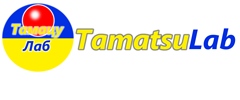Slovenia
Location
Located south of Central Europe, north of Southeastern Europe. It is bordered by Italy to the west, Austria to the north, Hungary to the northeast and Croatia to the southeast. The country borders the Alps in the north and the Adriatic Sea in the southwest.
Area
About 20,000km2
Capital (approximate population)
Ljubljana(280,000)
Business-related cities outside Ljubljana (approximate population)
Maribor(96,000), Celje(38,000), etc.
Population
about 2.09 million
Racial Composition
83% Slovenian, 2% Serb, 1.8% Croatian, 1.6% Bosnian, Other
Language
Slovenian
Religion
73% Catholic, 21.5% secular, 2.4% Muslim, 2.2% Eastern Orthodox, 0.9% Lutheran, etc.
Culture
Historically it was a crossroads of Slavic, Germanic and Romance languages and cultures.
- Predjamski grad
- Postojna Cave Park
- Blejsko jezero
- Partizanska bolnica Franja
- Lipica Stud Farm
- Triglavski narodni park
- Anthony's Shaft Mining Museum
- Ljubljanski grad
Education
Education in Slovenia ranks fourth in the EU.
- Univerza v Ljubljani
- Narodna in univerzitetna knjiznica
Overview of modern and contemporary history of Slovenia
1918 After the collapse of Austria-Hungary, he joined the Kingdom of Serbia, Croatia and Slovenia
1929 Kingdom of Serbia, Croatia and Slovenia renamed to Kingdom of Yugoslavia
1941-45 World War II, occupation by Nazi Germany and Italy
1945 Slovenia becomes a constituent republic of the Socialist Federal Republic of Yugoslavia
1991 Declaration of independence from Yugoslavia
1992 EU recognizes Slovenia's independence. The United States will follow. United Nations membership
2004 NATO accession, EU accession
2007 Euro introduced
Politics
It is a parliamentary democratic republic. The head of state is the president and the parliament is bicameral. The executive branch is headed by the Prime Minister.
- National Assembly Building of Slovenia
- Presidential Palace
- Vrhovno sodisce RS
GDP per capita
$27,452 (2020)
Economy
Economic development is progressing, and GDP per capita is one of the richest among the Slavic countries.
Europe
Ukraine, Finland, Sweden, United Kingdom, Denmark, Ireland, Netherlands, Switzerland, Norway, Germany, Austria, France, Belgium, Italy, Spain, Slovenia, Portugal, Czech, Hungary, Estonia, Poland, Slovakia, Latvia, Greece, Romania, Croatia, Lithuania, Bulgaria, Russia, Iceland, Belarus, Moldova, Northern Macedonia, Albania, Luxembourg, Bosnia and Herzegovina, Cyprus, Serbia, Montenegro, Andorra, Kosovo, San Marino, Vatican, Malta, Liechtenstein, Monaco
-- Return to World Region Information --


